Australian Tropical Rainforest Plants - Online edition
Diospyros fasciculosa (F.Muell.) F.Muell.
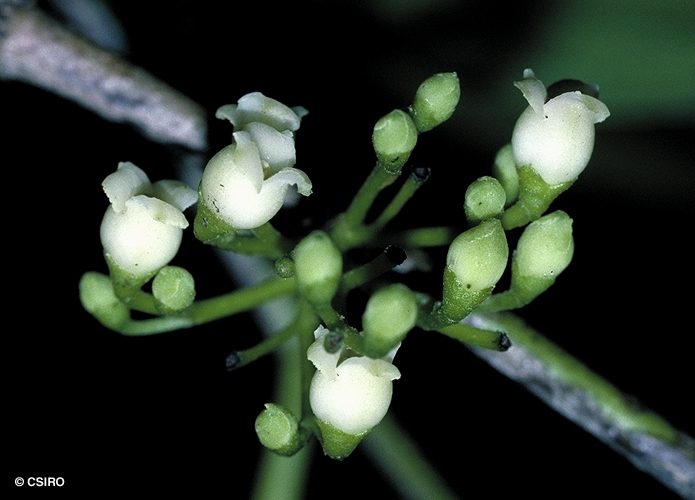

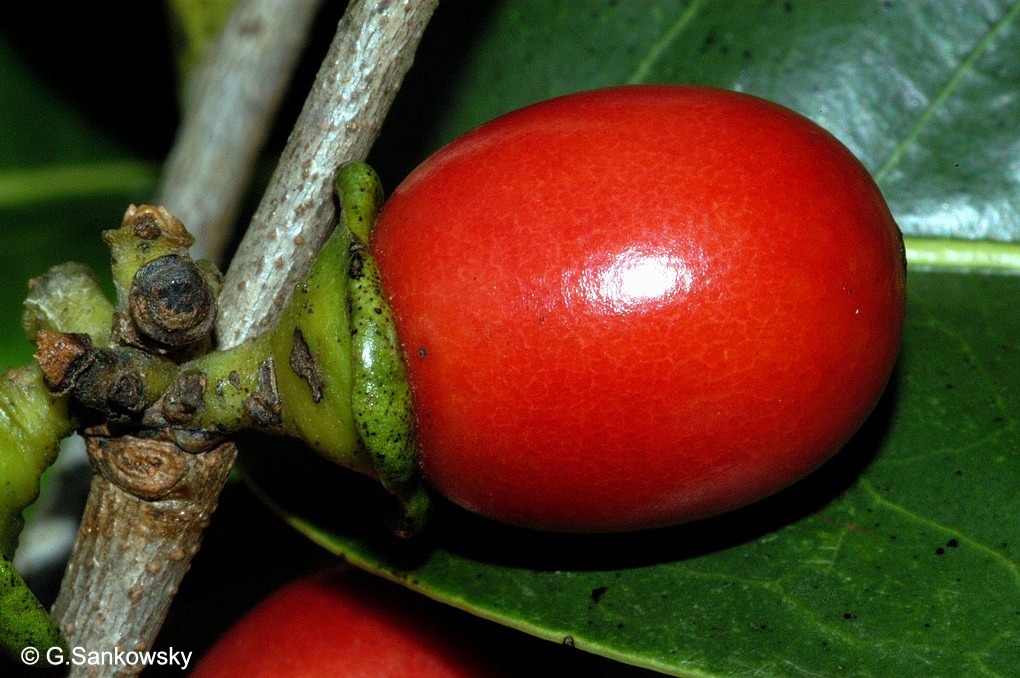
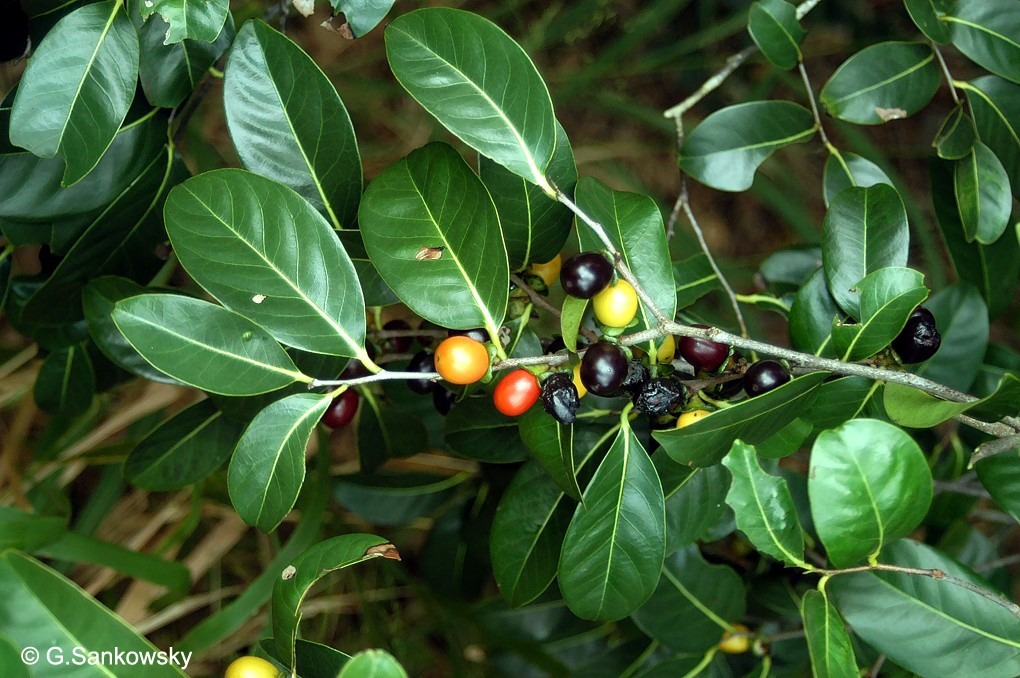

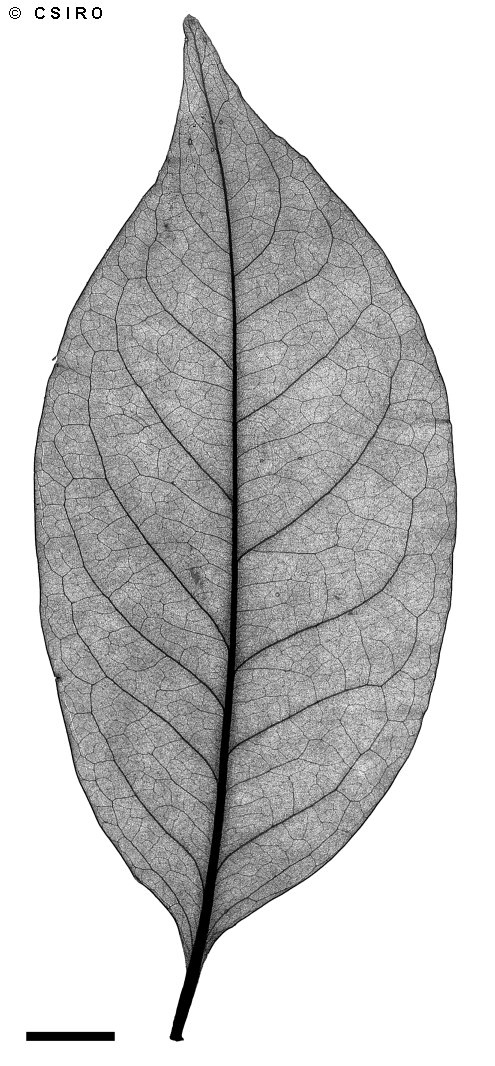
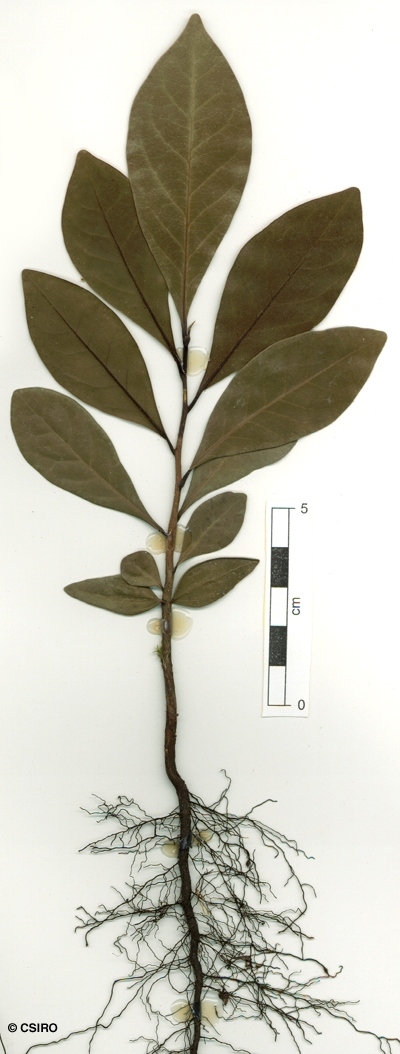

Mueller, F.J.H. von (1867) Intercolonial Exhibition Essays (1866-67) No. 5 Australian vegetation : 35.
Clustered Persimmon; Ebony; Ebony, Grey; Long Tom; Grey Ebony
Tree to 20 m, seldom exceeding 30 cm dbh. A thin red layer may occur between the inner and outer blaze.
Leaf blades about 6-19 x 2.5-7 cm, petioles about 0.5-1.0 cm long, flat to slightly grooved on the upper surface. glands sparsely scattered. Lateral veins 6-10, curving but not forming distinct loops. Oil dots visible with a lens.
Male inflorescence axes usually 3-12 in axillary fascicles, each axis branched with 3-10 flowers; calyx shallowly 3-4-lobed, sparsely clothed in pale appressed hairs; corolla campanulate, tube 2-2.5 mm long, glabrous, lobes 3-4; stamens 8-16(-20), fused at base in pairs, and fused at base to corolla tube; pistillode 0.5-0.75 mm long, glabrous. Female flowers 3-10 in a fascicle; calyx 3-4-lobed; corolla with 3-4 lobes; tube 2-2.5 mm long; staminodes 0-4; ovary 2-3 mm long, 6-locular.
Fruits seated on a three or 4-lobed persistent glabrous calyx appressed to base of fruit. Fruits glabrous, +/- globular, about 10-15 mm diam., 4-6-seeded, seeds 10-11 mm long. Testa brown to orange brown. Cotyledons much wider than the radicle.
Occurs in CYP, NEQ, CEQ and southwards as far as north eastern New South Wales. Altitudinal range from near sea level to 500 m. Usually grows in drier rain forest but also found in beach forest and gallery forest. Also occurs in Malesia, New Caledonia and Fiji.
Food plant for the larval stages of the Cephenes Blue Butterfly. Common & Waterhouse (1981).





